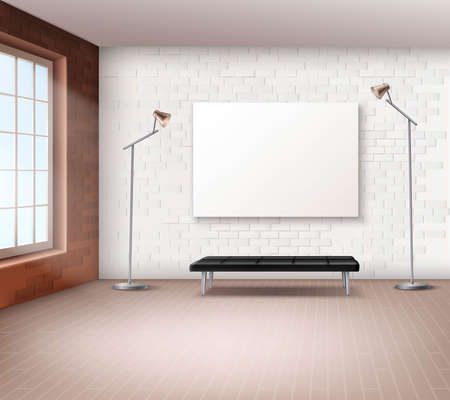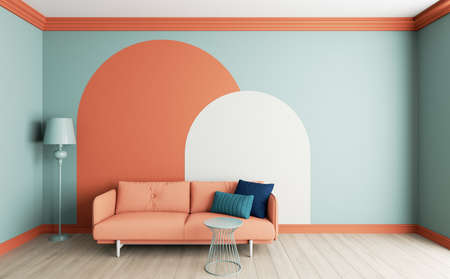Introduction to Accent Walls
Accent walls have become a popular trend in American interior design, and it’s easy to see why. An accent wall is simply one wall in a room that is painted, wallpapered, or finished differently from the others to create a striking focal point. Whether you’re drawn to bold colors, textured materials, or creative patterns, an accent wall can instantly elevate your living room’s style. In homes across the United States, homeowners are embracing this design element as an easy way to refresh their space without committing to a full renovation. By highlighting just one wall, you can transform the mood and energy of your living room—making it feel more personal, inviting, and uniquely yours.
2. DIY Accent Wall: Pros, Cons, and Popular Techniques
Taking the DIY route for your living room accent wall can be an exciting way to express your personality and creativity. Many Americans enjoy rolling up their sleeves and getting hands-on with home improvement projects—not only as a way to save money but also to add a personal touch that truly reflects their style. However, it’s important to weigh the benefits and challenges before diving in.
Pros and Cons of DIY Accent Walls
| Pros | Cons |
|---|---|
| Cost-effective—save on labor expenses | Requires time, effort, and patience |
| Customizable to your taste and pace | Poor execution may impact final look |
| Sense of accomplishment and pride | Mistakes can be costly to fix |
| Flexible scheduling—work when you want | Limited by your own skill level |
Popular DIY Techniques for Accent Walls
If you’re feeling inspired, here are some popular methods to consider for your DIY project:
Peel-and-Stick Wallpaper
This option is a favorite for renters or anyone looking for a temporary change. Easy to apply and remove, peel-and-stick wallpaper comes in countless patterns—from bold geometrics to subtle textures. It’s mess-free and perfect if you like switching things up frequently.
Shiplap Panels
Shiplap brings a cozy, farmhouse vibe that’s become wildly popular across the U.S., especially in suburban homes. Pre-cut panels make installation easier, and you can paint or stain them for a customized look. Just remember that accurate measuring and leveling are key!
Reclaimed Wood Planks
Sustainability-minded homeowners love reclaimed wood for its eco-friendly appeal and unique character. Salvaged boards offer rustic warmth and one-of-a-kind texture, while also keeping materials out of landfills. Sourcing quality wood locally can take extra effort but delivers stunning results.
Eco-Friendly Paint Techniques
If you prefer a simple update, try painting one wall in a bold or earthy tone using low-VOC or natural clay-based paints. This approach supports indoor air quality while giving you unlimited color choices. Creative techniques like color blocking or stenciling can add even more interest.
Tip:
No matter which method you choose, always prepare your surface thoroughly—cleaning, sanding, and priming will help ensure a beautiful finish that lasts.

3. Hiring a Professional: What to Expect
If you’re considering a standout accent wall but want a flawless finish, hiring a local pro might be the best route. Working with a professional comes with its own set of perks and considerations—especially for intricate patterns, eco-friendly materials, or when your schedule is already packed.
Working with Local Experts
Choosing a local contractor means tapping into someone who knows the trends, climate needs, and preferred materials in your region. Most professionals will start with an on-site consultation to understand your vision and space. They’ll offer design advice, recommend sustainable options like low-VOC paints or reclaimed wood, and help you navigate choices that suit both your style and budget.
Typical Costs & Timelines
The cost of hiring a pro for an accent wall in the U.S. generally ranges from $300 to $1,500, depending on size, complexity, and materials. Custom millwork or eco-friendly installations can land at the higher end. Expect the project to take anywhere from one day for a simple paint job to several days or more for advanced treatments like paneling or textured surfaces.
Material Selection & Sustainability
Professionals often have access to higher-quality or specialty materials not always found at big box stores. If sustainability is important to you, ask about FSC-certified woods, recycled panels, or water-based adhesives. Pros know how to source responsibly and install materials efficiently to reduce waste.
The Value of Expertise
Perhaps the biggest advantage of going pro is peace of mind. Experienced installers bring precision tools and skills—ensuring everything lines up perfectly and lasts for years. For complex geometric designs or environmentally friendly upgrades, their know-how can make all the difference in creating a living room accent wall that’s both beautiful and built to last.
4. Cost Comparison: DIY vs. Professional Installation
When planning your living room accent wall, understanding the true costs behind both DIY and professional installation is key to making an informed decision. Let’s break down the main budget factors—materials, tools, time, and those often-overlooked hidden expenses—to help you see the big picture.
Material Costs
The price of materials will vary based on your accent wall choice—paint, wood planks, wallpaper, or other eco-friendly finishes. DIYers can often shop sales or reclaim materials for savings, while professionals may have access to wholesale pricing but typically mark up for convenience.
Tools & Equipment
DIY installation requires purchasing or renting tools like levels, tape measures, saws, and paint supplies. If you already own some basics, this can lower your initial investment. Pros arrive with their own tools, so you won’t pay extra for equipment—but this is factored into their labor rate.
Cost Breakdown Table
| Expense Category | DIY | Professional |
|---|---|---|
| Materials | $100–$500 (depends on type/quality) | $120–$600 (may include markup) |
| Tools & Equipment | $50–$200 (buy/rent as needed) | Included in service fee |
| Labor/Time Investment | Your time (8–16 hours typical) | $300–$1,000+ (varies by project size/complexity) |
| Hidden Expenses | Mistakes/rework: $50–$150 Disposal fees: $0–$30 Protective gear: $20–$40 |
Minimal; usually built-in unless unexpected issues arise |
Your Time Is Valuable
If you enjoy hands-on projects and have weekends to spare, DIY could be rewarding—and cost-effective if all goes smoothly. However, factor in your hourly rate (even if just for fun)—your time spent prepping, painting, or installing adds real value. Pros get the job done faster and with less disruption to your routine.
Potential Hidden Expenses
DIY projects sometimes come with surprise costs—think extra paint after a miscalculation, fixing minor errors, or buying extra supplies mid-project. Professionals tend to anticipate these needs and often guarantee results within their quoted price.
The Bottom Line
If you’re working with a tight budget and have basic skills (plus patience), DIY can save money—especially for simple accent walls. For complex designs or when time is at a premium, hiring a pro delivers peace of mind and lasting quality. Weigh both options carefully to find what fits your lifestyle and living room vision best.
5. Eco-Friendly Choices for Your Accent Wall
Bringing an accent wall to life in your living room doesn’t have to come at the expense of the environment. Whether you’re going DIY or opting for a professional installation, there are plenty of sustainable options that align with American values of eco-consciousness and healthy living spaces.
Sustainable Materials
Start by choosing materials with a lower environmental impact. Reclaimed wood is a favorite across the U.S. for its rustic character and the story it brings to a space. Bamboo panels, rapidly renewable and durable, offer a modern twist while being kind to the planet. If you prefer paint, look for brands that use recycled content or responsibly sourced ingredients.
Non-Toxic Finishes
Indoor air quality matters—especially in homes where families gather and relax. Select paints and stains labeled as low-VOC (volatile organic compounds) or zero-VOC to minimize harmful emissions. Many American manufacturers now offer these safer alternatives in an array of stylish colors and finishes, making it easy to find something that fits your vision.
Environmentally Conscious Techniques
When installing your accent wall, consider techniques that reduce waste and energy consumption. For DIYers, measure carefully to avoid excess material cut-offs, and donate any usable leftovers to local organizations or community projects. Professionals often have access to advanced tools that create precise cuts and efficient installations, which can further limit material waste.
No matter which route you take—DIY or professional—you can create a beautiful, on-trend accent wall that reflects both your personal style and your commitment to protecting the environment.
6. Tips for Choosing the Right Option for Your Space
When deciding between a DIY or professional accent wall installation, it’s important to look at several key factors that fit your lifestyle and needs. Start by honestly assessing your skill level. If you’re handy with tools, enjoy home projects, and have a creative eye, DIY could be both fun and rewarding. On the other hand, if you’re short on time or lack experience, hiring a pro might save you stress and ensure a polished result.
Consider Your Timeline
Think about how quickly you want your new accent wall completed. DIY projects can stretch over weekends or even weeks, especially if you run into unexpected hiccups. Professionals typically work faster and can stick to a clear schedule—ideal if you’re prepping for guests or an event.
Budget Wisely
Your budget plays a big role in this decision. DIY is generally more cost-effective because you’re saving on labor costs. However, don’t forget to factor in the price of materials, tools you may need to buy or rent, and any possible mistakes that could require extra spending. With professionals, you pay more upfront but benefit from their expertise and access to trade discounts on materials.
Match Your Style Preferences
If you have a unique vision for your living room accent wall—like eco-friendly reclaimed wood or intricate geometric patterns—a professional can help bring that vision to life with precision. But if you love the personal touch and want your space to reflect your own handiwork, going the DIY route might be more satisfying.
Ultimately, choosing between DIY and professional installation comes down to what feels right for your home. Consider your skills, timeline, budget, and style preferences to decide on the best way to create an accent wall that brings warmth and character to your living room.


